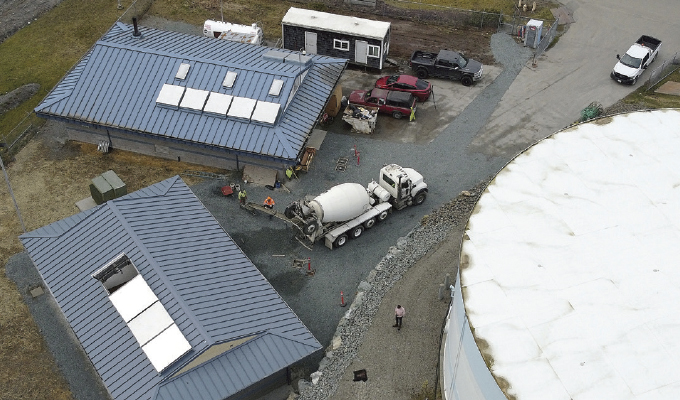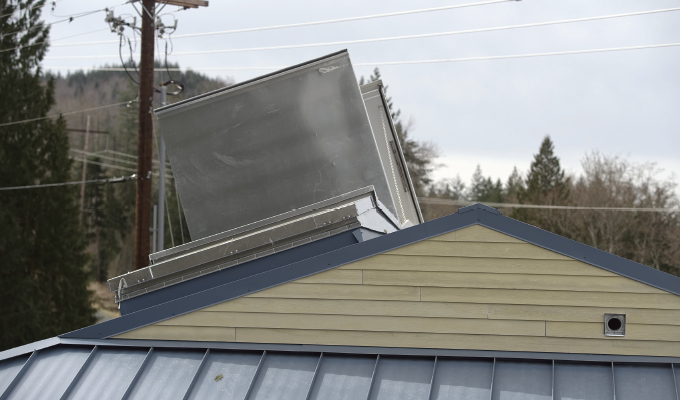It is no secret that craft breweries are big in Washington state. With a total of 437 breweries statewide, only California, Pennsylvania, and New York have more, as counted by Statista.com. The business generates an economic impact of more than $1.8 million and produces more than 570,000 barrels of craft beer per year, according to the Brewers Association.
The most important ingredient in beer, according to most connoisseurs, is water. Skagit County, which is home to thirteen of Washington’s craft breweries, takes pride in its water’s award-winning taste. This year, the Judy Reservoir water system took first place in the Best Tasting Water Contest held by the American Water Works Association Northwest subsection. Skagit Valley is home to a Craft Brewing Academy, hosts four brewery festivals, and ranks tenth in the nation on the “Hidden Beer Gems in the USA”. Beer and water are inexorably intertwined in Skagit County.
The linchpin to great tasting water, and beer, in Skagit County is the 148-acre Judy Reservoir, which stores approximately 1.5 billion gallons of water. Earlier this year, Skagit County completed construction of a new $3.2 million, 1,900-square-foot pumping station. The new structure will help ensure continuous water delivery to residents. The previous system required workers to shut down the treatment plant for maintenance. “When we shut down the plant, some customers would lose water,’’ says Brandt Barnes, Skagit PUD’s construction manager.
The new building allows workers to access the pumps and valves for maintenance. The three 200-horsepower pumps can deliver up to 9,000 gallons of water per minute. More importantly, workers do not have to shut off water to customers with the new easy access to the valves.
GROWING REGION
Skagit County, which extends across 1,920 square miles, has seen its population increase dramatically since the Skagit Public Utility District first purchased private water systems in 1936. At that time, the county’s population stood at slightly more than 35,000. By 1990, it had more than doubled, reaching almost 80,000 people. The following two decades brought further growth, with residents numbering more than 130,000 by 2021.
Skagit purchased private water systems that served the cities of Mount Vernon, Burlington and Sedro-Woolley and consolidated them into an extensive water system serving the entire valley. Initially, each city maintained its water filtration facility. Over time, the PUD replaced the aging filter plants with new wells near the Skagit River and eventually with the Judy Reservoir.
In 1947, the PUD began diverting water from streams in the Cultus Mountain watershed to the reservoir, which quickly became the region’s primary water supply. The PUD also constructed a storage and treatment facility to deliver chlorinated water through 11 miles of transmission lines.
In 1990, the PUD built a new filtration plant that supplies 10 million gallons per day of safe, clean, reliable water to customers. The plant features direct filtration and chlorine dioxide treatment followed by chlorination before distribution.

Valve Dilemma
In the fall of 2020, Skagit PUD’s commissioners authorized the construction of the new raw water pump station at Judy Reservoir to help solve maintenance issues that impacted customer service. The new building allows workers easier access to the pumps and valves for maintenance.
The three 200-horsepower pumps can deliver up to 9,000 gallons of water per minute. More importantly, workers do not have to shut off water to customers with the new easy access to the valves.
“It’s a much more effective and efficient solution,’’ Barnes says. “The raw water pumps need to be maintained regularly. We can extend the service life of the valves and not interrupt customers every time we need to work on a pump.”
The ability to adjust valves and water delivery was the project’s cornerstone. The variable frequency drive (VFD) allows the pumps to run at different revolutions per minute, reducing energy usage and enhancing efficiency.
“We’re not wasting energy throttling back on the discharge valve,’’ Barnes adds. “A lot of pumps are constant-speed. When they operate, they supply whatever the pump can generate. Now we can dial the VFDs up and down to get the necessary flows.”
Accessing Equipment
Roof hatches manufactured by The BILCO Company allow workers to remove the pumps when they need replacement.
Two motorized roof hatches, 12 feet by 6 feet 5 inches, were custom-made by BILCO for the project. Anderson Specialties procured the hatches for McClure and Sons, which built the pumping station.
“Because of the unique size and the distance between pumps, it was challenging to get the hatches installed,’’ Barnes says. “At first, we couldn’t meet the truss opening. We had to double up the opening size. Installing motorized hatches instead of a hand crank was a good solution.”
BILCO, the manufacturer of specialty access products, makes hatches of various sizes to allow for equipment access. “We looked at other manufacturers, but we all worked hard at coming up with a good solution,’’ Barnes says.
Delays in water access frustrated residents for years. With the new pumping station, Skagit County residents served by the PUD won’t face that issue any longer. “The major component to this project was being able to service pumps without having to shut down the treatment plant,’’ Barnes says. “The pump station we have now is much more efficient and maintenance-friendly. And that was the primary objective.”
GREAT TASTING WATER
The Skagit PUD proudly celebrates its great-tasting water in a variety of ways. The department takes a water trailer to community events, encourages water conservation, gives tours to help students learn how raw water is turned into safe drinking water and more.
The proof, however, might just come in the pints served by the local brew masters. Skagit PUD partners with ocal breweries to sponsor the Farm to Pint Ale Trail. Participants collect “passport” stamps at the breweries and win a souvenir pint glass and prizes.
The event raised $129,000 to help Viva Farms in Skagit empower aspiring and limited-resource farmers by providing bilingual training in organic farming practices and access to land, infrastructure, equipment, and marketing services. That’s a strong testament to the great taste of the water from Judy Reservoir, and portends steady growth for the years ahead.
FACTS & FIGURES
What and where:
The Judy Reservoir raw water pumping station is a new $3.2 million, 1,900 square foot facility in Skagit County, Washington.
Why:
Residents became inconvenienced when workers needed to shut down the pumping station to service equipment. The new pumping station allows the station to continue to operate without shutting down operations and includes pumps with valves that can adjust distribution.
Vital water supply:
Judy Reservoir is the main water source for Skagit County, which has seen its population grow by 42 percent since 1990.
Roof access:
When the pumps need eventual replacement, they will be lifted out and replaced through two motorized roof hatches manufactured by The BILCO Company. The 12-feet by 6-feet hatches were custom made for the project.
Did you know?
One of the region’s most anticipated events is the annual Skagit Valley Tulip Festival. More than 1 million people visit each year to explore more than 300 acres of colorful flowers.
Thomas Renner writes on building, construction, engineering, and other trade industry topics for publications throughout the United States.


